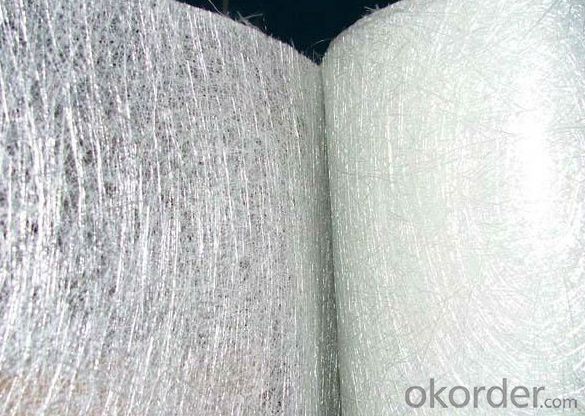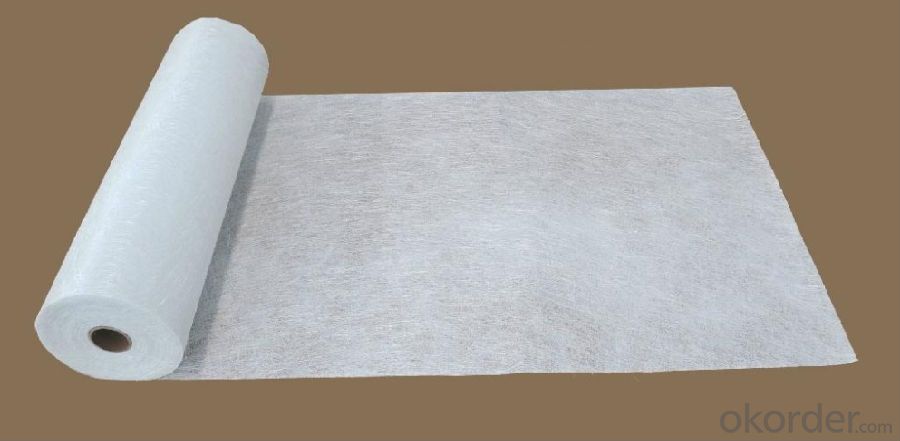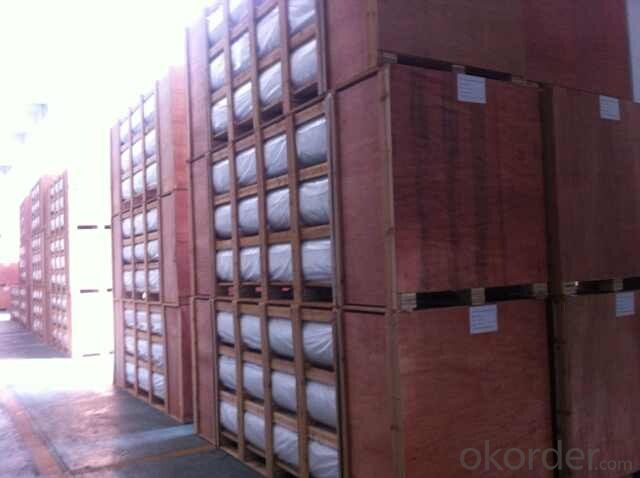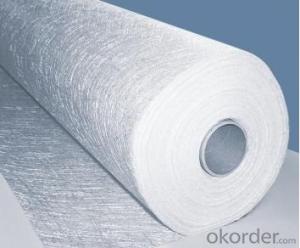E-glass Chopped Strand Mat 3000mm
- Loading Port:
- Shanghai
- Payment Terms:
- TT or LC
- Min Order Qty:
- -
- Supply Capability:
- 10000MT m²/month
OKorder Service Pledge
OKorder Financial Service
You Might Also Like
1.Breif Introduction
Chopped strand mat with width 3000mm
2.Main Features
With Excellent compatibility with resin,heating resistance,Faster and well wet-out
Chopped strand mats are made of chopped strands of 50mm in length,which are randomly dispersed and bonded together by the polyester binder in powder or emulsion.
Chopped strand mats are mainly used in FRP fields,such as hand lay-up,filament winding and molding process. The typical products are panels,tanks,boats,automotive parts,cooling towers,pipes and so on.
3.Specifications
Glass type: E-glass and C-glass Chopped Strand Mat.
Bond type: Powder or Emulsion.
Roll Width: 3000mm.
Roll weight/: 180kgs.
Normal types :28kgs.30kgs.35kgs.
4.FAQ
Q: Which knid of payment terms can you accept?
A: We can accept 30% prepayment, 70% payment before shippment. LC is also accepted



- Q:What is the impact resistance of fiberglass mat tissue at high temperatures?
- The impact resistance of fiberglass mat tissue at high temperatures can vary depending on several factors such as the specific composition of the tissue, the manufacturing process, and the conditions under which it is tested. Generally, fiberglass mat tissue exhibits good impact resistance at high temperatures due to the inherent strength and durability of fiberglass materials. Fiberglass is known for its excellent mechanical properties, including high tensile strength and stiffness, which contribute to its overall impact resistance. At high temperatures, fiberglass mat tissue is typically able to maintain its structural integrity and resist cracking or breaking under impact. This is because the fiberglass fibers are designed to withstand high temperatures and do not soften or deform easily. However, it is important to note that the impact resistance of fiberglass mat tissue can be influenced by other factors such as the presence of any additives or binders used in the manufacturing process. Some additives or binders may reduce the impact resistance or make the tissue more susceptible to damage at high temperatures. To determine the specific impact resistance of a particular fiberglass mat tissue at high temperatures, it is important to consult the manufacturer's specifications or conduct specific tests under controlled conditions. These tests can provide more accurate information on how the material will perform under impact at elevated temperatures.
- Q:What is the UV resistance of fiberglass mat tissue?
- The UV resistance of fiberglass mat tissue may vary depending on the specific formulation and manufacturing process employed. Generally, fiberglass mat tissue is renowned for its outstanding ability to withstand ultraviolet (UV) radiation. The mat's fiberglass strands typically receive a coating of resin or binder, which affords additional safeguard against UV degradation. This coating acts as a barrier, preventing the fibers from deteriorating or becoming brittle under sunlight exposure. Moreover, the dense and tightly woven construction of the fiberglass mat tissue itself grants a certain level of inherent UV resistance. Nonetheless, it is crucial to note that extensive exposure to intense UV radiation can still result in some degree of deterioration over time. As such, it is advisable to refer to the specific product specifications or manufacturer's guidelines for precise information regarding the UV resistance of a particular fiberglass mat tissue.
- Q:How does the width of fiberglass mat tissue affect its installation?
- The installation process of fiberglass mat tissue can be influenced by its width. When contemplating the width of fiberglass mat tissue, it is vital to consider the specific demands of the application or project. A broader fiberglass mat tissue can offer numerous benefits during installation. Firstly, it enables a greater coverage area, reducing the number of required overlaps and potentially saving time during installation. This can be especially advantageous in large-scale projects where efficiency is of utmost importance. Moreover, a wider width can provide better overall coverage and minimize the risk of potential gaps or weak points in the installation. This can result in a more consistent and reliable end product, ensuring improved performance and durability. However, it is important to note that a wider fiberglass mat tissue may also present certain challenges during installation. It can be more challenging to handle and maneuver, particularly when working in tight or confined spaces. This may necessitate additional caution and attention to ensure proper alignment and smooth application. Additionally, the width of fiberglass mat tissue can impact the amount of resin or adhesive required for installation. A wider width may necessitate a larger quantity of resin or adhesive, potentially leading to an increase in the overall project cost. Ultimately, the choice of fiberglass mat tissue width should be based on the specific requirements and limitations of the project. Factors such as the size of the installation area, the extent of coverage needed, and the available resources should all be taken into account to determine the most suitable width for the application.
- Q:Can fiberglass mat tissue be used for boat building?
- Yes, fiberglass mat tissue can be used for boat building. It is commonly used as a reinforcement material in boat construction due to its strength, durability, and ability to resist water damage.
- Q:What are the different color options available for fiberglass mat tissue?
- Various color options are offered for fiberglass mat tissue, catering to different preferences and applications. White, gray, black, and beige are among the commonly available colors. These color choices offer versatility in design and aesthetics, allowing users to select a color that enhances their individual project needs. Factors like UV resistance and desired visibility or camouflage levels can also influence the color selection. In conclusion, the availability of diverse color options for fiberglass mat tissue grants users the flexibility and customization opportunities necessary to achieve their desired results.
- Q:Is fiberglass mat tissue fire-resistant?
- Fiberglass mat tissue is not naturally fire-resistant, contrary to popular belief. Although fiberglass itself is non-combustible, manufacturers usually mix the mat tissue with a flammable binder or resin. Nevertheless, there are specialized fiberglass mat tissue options that have undergone treatment with fire-resistant coatings or additives. These treated materials offer enhanced fire resistance properties and are frequently utilized in construction and insulation materials that prioritize fire safety. It is crucial to carefully examine the product specifications or seek advice from the manufacturer to ascertain the fire resistance capabilities of a specific fiberglass mat tissue.
- Q:What are the main applications of fiberglass mat tissue?
- The main applications of fiberglass mat tissue include reinforcement in the construction industry for roofing, walls, and flooring, as well as insulation in thermal and acoustic systems. It is also used in the manufacturing of automotive parts, boats, and pipes for their strength and durability. Additionally, it finds use in the production of printed circuit boards and as a filtration medium in air and liquid filtration systems.
- Q:Does fiberglass mat tissue provide good moisture control?
- Yes, fiberglass mat tissue does provide good moisture control. It is a highly effective material that helps to prevent moisture build-up and condensation by providing a barrier against water intrusion. Additionally, it helps to improve the overall insulation of the structure, further enhancing moisture control.
- Q:Can fiberglass mat tissue be used for reinforcing fiberglass pools?
- Yes, fiberglass mat tissue can be used for reinforcing fiberglass pools. Fiberglass mat tissue is a thin, flexible material that is commonly used in the construction and repair of fiberglass structures, including pools. It is made up of fine glass fibers that are bonded together with a binder. When applied to the surface of a fiberglass pool, the mat tissue provides additional strength and reinforcement, helping to prevent cracks or damage. It is typically applied in conjunction with a fiberglass resin, which acts as an adhesive to bond the mat tissue to the pool surface. Using fiberglass mat tissue for reinforcing fiberglass pools is a common practice and can help to extend the lifespan and durability of the pool.
- Q:Is fiberglass mat tissue suitable for insulation in industrial applications?
- Yes, fiberglass mat tissue is suitable for insulation in industrial applications. It offers excellent thermal insulation properties, high tensile strength, and is resistant to moisture, chemicals, and fire. Additionally, it is easy to install and provides effective heat retention, making it a reliable choice for insulating various industrial equipment and structures.
1. Manufacturer Overview |
|
|---|---|
| Location | |
| Year Established | |
| Annual Output Value | |
| Main Markets | |
| Company Certifications | |
2. Manufacturer Certificates |
|
|---|---|
| a) Certification Name | |
| Range | |
| Reference | |
| Validity Period | |
3. Manufacturer Capability |
|
|---|---|
| a)Trade Capacity | |
| Nearest Port | |
| Export Percentage | |
| No.of Employees in Trade Department | |
| Language Spoken: | |
| b)Factory Information | |
| Factory Size: | |
| No. of Production Lines | |
| Contract Manufacturing | |
| Product Price Range | |
Send your message to us
E-glass Chopped Strand Mat 3000mm
- Loading Port:
- Shanghai
- Payment Terms:
- TT or LC
- Min Order Qty:
- -
- Supply Capability:
- 10000MT m²/month
OKorder Service Pledge
OKorder Financial Service
Similar products
New products
Hot products
Related keywords



























